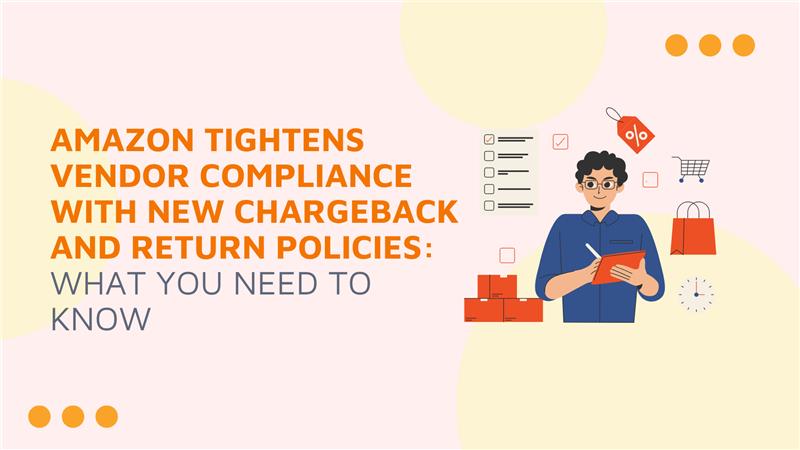Amazon is on a cleanup mission. As part of its ongoing efforts to improve the overall shopping experience for customers and increase the efficiency of its marketplace, Amazon has launched the “Bend the Curve” project—an initiative designed to purge stale product listings that are underperforming, outdated, or have no sales. In the coming months, 24 billion product listings could be removed, with Amazon aiming to reduce the number of ASINs in its catalog to under 50 billion by the end of 2025. As a seller, this means action is required to audit your listings, remove slow-moving products, and stay compliant with Amazon’s new standards. In this blog, we’ll break down why this matters, what you need to do to prepare, and how you can optimize your catalog to avoid being impacted by Amazon’s listing cleanup. Why This Update Matters for Sellers Amazon’s new “Bend the Curve” project is part of a larger trend where Amazon is placing more emphasis on quality over quantity in its product listings. Here’s why this update is crucial for every Amazon seller: Listings with No Sales, No Stock, or Outdated Information Will Be Purged Amazon is targeting listings that are stale and not performing. If your listings have no sales, incorrect stock levels, or outdated product details, they may be removed from the platform. This is an effort to clean up Amazon’s catalog and improve customer shopping experiences by providing them with the most relevant and up-to-date product options. Creation Throttling and Listing Restrictions If you have a bloated catalog with many underperforming listings, you may face creation throttling. This means that sellers with unoptimized catalogs will have a hard time creating new listings until their current products are optimized and relevant. Amazon is incentivizing sellers to streamline their inventory to improve product visibility and avoid these throttling measures. Fewer Listings, Better Quality While Amazon is reducing the number of ASINs on the platform, it’s also raising the bar for product listings. Sellers who focus on creating high-quality, optimized listings that are relevant to the current market will have a competitive advantage. How to Stay Ahead of the Curve: 5 Key Actions to Take Now The “Bend the Curve” project isn’t just about reducing the number of listings—it’s about improving the quality of those listings. Here are five actions you can take today to ensure your product listings are optimized, visible, and ready for the future: 1. Perform a Comprehensive Catalog Audit Start by reviewing your entire product catalog. Identify which listings have no sales, outdated product information, or no stock. These listings are the first candidates for removal. You’ll need to remove or update any products that aren’t performing well. Update product information: Ensure your listings have the most up-to-date and accurate descriptions, pricing, and stock information. Remove underperforming products: If certain products aren’t moving, it may be time to remove them from your catalog entirely. 2. Focus on High-Performing Products Amazon will be prioritizing listings that perform well and generate sales. To stay ahead, you need to ensure your top-performing products have accurate stock levels, detailed descriptions, and optimized keywords. These products are critical to maintaining visibility in Amazon’s search results. Audit your best sellers: Ensure they’re fully stocked and that their listings are optimized for searchability. 3. Use Amazon’s Tools for Listing Optimization Make use of Amazon’s Listing Optimization Tools to ensure your product listings are in line with the new standards. Tools like Inventory Performance Index (IPI) and Listing Quality Dashboard can help you track and improve the health of your listings. Optimize product descriptions: Focus on clear, concise, and informative descriptions that highlight your product’s benefits. Update product images: High-quality images can make a big difference in how your products are viewed by customers. 4. Avoid Creation Throttling with a Lean Catalog Amazon’s new creation throttling feature blocks sellers with overstuffed catalogs from adding new products. To prevent being impacted by this, it’s essential to streamline your catalog and ensure it consists of high-quality, well-performing listings. Focus on quality: Instead of creating hundreds of listings, focus on a smaller, more curated catalog of products that align with market demand. 5. Keep Track of Your IPI Score Your Inventory Performance Index (IPI) score directly affects your capacity limits and visibility on Amazon. Regularly monitor your IPI score and take steps to improve it by optimizing your listings, reducing excess inventory, and maintaining healthy stock levels. Monitor IPI: If your IPI score is low, you may face restrictions on how much inventory you can store in Amazon’s warehouses. Ensure your stock levels align with Amazon’s recommendations. How Big Internet Ecommerce Helps You Stay Ahead of the Curve At Big Internet Ecommerce, we specialize in helping Amazon sellers optimize their product listings, streamline inventory, and maintain strong visibility in Amazon’s marketplace. Here’s how we can help: Listing Optimization and Catalog Audits • We’ll help you perform a full audit of your product catalog, identifying slow-moving and outdated listings. • We optimize product descriptions, images, and keywords to ensure maximum visibility in Amazon’s search results. IPI Score Monitoring and Performance Management • We monitor your IPI score and provide actionable insights to improve your listing performance. • Our team will ensure your product catalog is streamlined and compliant with Amazon’s new requirements. Streamlined Inventory Management • We help you reduce excess inventory and optimize replenishment cycles, ensuring you stay within capacity limits. • Our AWS integration ensures a smooth inventory flow across Amazon’s FBA and AWD systems. Amazon Policy Compliance • We keep you up-to-date with Amazon’s evolving policies, helping you stay compliant with all new rules and guidelines to avoid penalties or listing removals. Amazon’s “Bend the Curve” project is a wake-up call for sellers to optimize their listings and focus on quality over quantity. By following these actionable steps, you can ensure that your product catalog stays relevant, visible, and competitive in Amazon’s evolving marketplace. The key is to audit your catalog regularly, remove outdated listings, and make sure your











